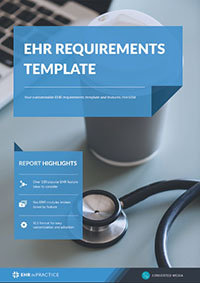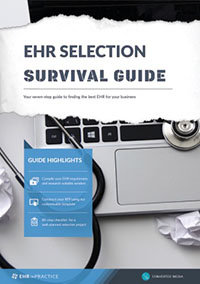The top four EHR requirements every practice should have
When choosing an EHR, the requirements gathering process provides the foundation for a successful selection process. Finding the right features provides a necessary first step in meeting an organization’s goals regarding its EHR technology.
What should every practice consider during the requirements gathering process?
Firstly, a healthcare organization conducting requirements gathering and preparing RFPs, above all other considerations, will look at their individual needs, which may vary according to the area of practice, and internal and external circumstances. However, despite the individual nature of the requirements gathering process, one can still point to EHR requirements that are general across most healthcare practices.
Patient Engagement Features
Improving patient engagement can have a positive effect on patient outcomes. Patient engagement features generally involve the use of patient portals to engage patients in their care by providing a method of allowing seamless communication between the patient and the provider and by facilitating the patients' access to their clinical information.
Despite the importance of patient engagement features, they tend to be underutilized, particularly by smaller practices. A Black Book Research survey of practitioner satisfaction found that 84% of single practices used patient engagement functionalities either infrequently or not at all.
Easy-to-use interfaces
Many practices look to improve the efficiency of their operations. One of the more effective ways to accomplish this goal is to improve workflows. An EHR's interface can have a profound and positive impact on workflows. An interface that is poorly designed can increase the time and difficulty clinicians encounter when inputting data and navigating the system.
Research from Stanford Medicine and the Harris Poll examined primary care physicians' perceptions of EHR, the research focused on identifying what problems doctors were encountering with EHRs. 72% of survey respondents stated that improving EHRs’ user interfaces would be the most effective way to address EHR challenges.
Speech recognition for hands-free data entry
In the Stanford Medicine and Harris Polling data referenced previously, 82% of the physicians surveyed indicated that they want EHRs with speech recognition for hands-free data entry. Speech recognition in an EHR offers a way for clinicians to spend less time on data entry tasks, but also provides a way to foster better patient-to-clinician interaction since face-to-face time with patients is not compromised by data entry tasks.
Enhanced support for disease diagnosis, prevention, and population health management
Lastly, Standford Medicine and Harris survey results showed that 43% of the physicians surveyed stated that improved predictive analytics to support disease diagnosis, prevention, and population health management were an important feature. EHR features that can assist in diagnosing disease and monitoring patient population health can assist in improving quality of care and improving population health.
Requirements will differ by practice. However, an organization should consider the four requirements discussed here as a starting point for their requirements gathering process given their importance in improving the quality of care and efficiency.
Free white paper

EHR Requirements Template
Over 100 requirement and feature ideas to kickstart your EHR selection project

Featured white papers
Related articles
-

EHR requirements and key features: your complete guide
Our extended guide to EHR requirements - everything you need to know and more on the subject
-

What successful EHR requirements gathering looks like
How to get the most out of your EHR requirements gathering process
-

How to start your EHR requirements gathering
The first steps to creating your EHR requirements



